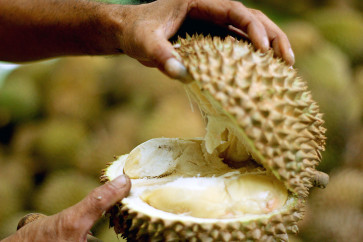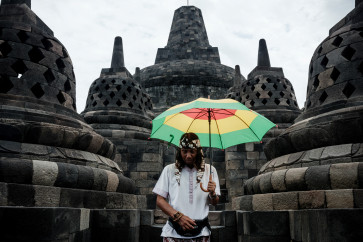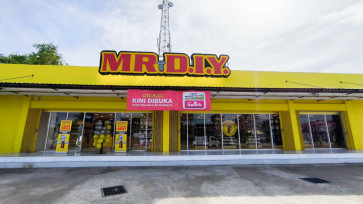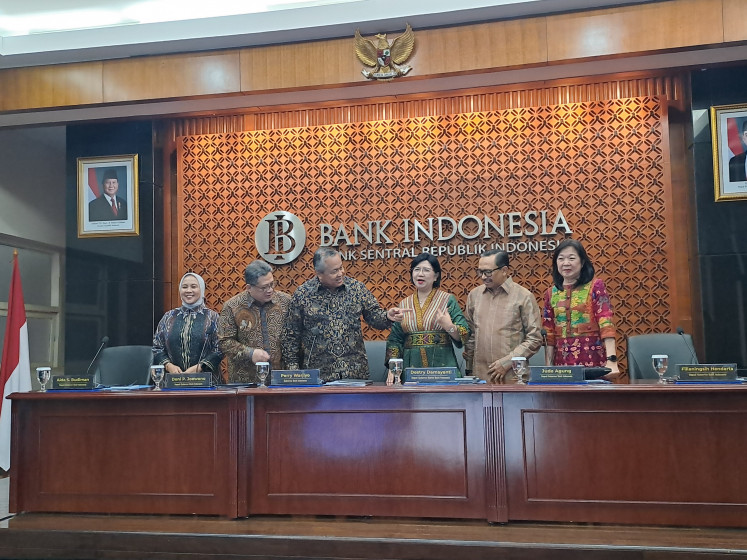Popular Reads
Top Results
Can't find what you're looking for?
View all search resultsPopular Reads
Top Results
Can't find what you're looking for?
View all search resultsLighting the way
Hand crafted: Incandescent light globes on display have been molded with the filaments wired by hand in Bali
Change text size
Gift Premium Articles
to Anyone
Hand crafted: Incandescent light globes on display have been molded with the filaments wired by hand in Bali.
As the sun goes down over Bali, the roadside workshop of a long-life lightbulb recycler blazes into life.
Squatting on a sidewalk in Blah Batu beside a box filled with electrodes, lightbulb spirals, pliers and an electric cable, Kadek Sukarja patiently rebuilds the long-life lightbulbs that have become a staple in many people's homes.
'Most people think that if the glass breaks or the light stops working, they have to throw out the bulbs and buy new ones, but I can replace the glass or the electrical components and the bulbs are as good as new,' says the 22-year-old of the energy-efficient bulbs that, while kind to the environment, are pricey to replace.
While not all bulbs can be resurrected, Kadek has a nest of recycled bulbs ready for sale at around half the market price of new ones. 'When people bring in their dead bulbs, I check to see if the electrodes that cool the bulb are still OK. If that is all good, I simply change the glass spiral. If the electrodes are broken, I replace those components and reassemble the bulb, so I recycle them,' says the former home builder who learned his skills via the internet.
His self-directed learning took a month of trial and error followed by research into suppliers of the lightbulb components.
'The spirals are factory-made in Java. They are the white lights; the factory does not make the yellow lights. Those are from branded companies,' says Kadek.
A steady stream of customers roll up on motorbikes to examine Kadek's wares as he takes new spiral bulbs and electrodes, finessing them into life to maintain his ready stock.
There are just a handful of lightbulb recyclers in Gianyar. 'There is a woman over in Tegas, and me here in Blah Batu. It's not a job many Balinese do. Most of the recyclers are from Java, maybe because the lightbulb factory is there,' says Kadek, stressing that his light globes are safe, though he is wary of working so intimately with electricity.
'Yes, I am scared of electricity, so I am very careful in my work,' says the young man.
At the other end of the lighting spectrum is Vio - The Bulb Gallery, which exports chandeliers, wall and table lights to Europe, and soon South Africa, from Bali.
Working with local artisans and technicians, business founder Matteo Molena, from the world's glass capital of Venice, and his wife Vita, are redefining the art of lightbulbs, crafting giant glass bulbs glowing with exposed incandescent filaments. Each bulb is molded and the filaments handcrafted into geometric and linear forms that come alive at the flick of a switch.
Molena says the Tungsten filament globes are not energy efficient, with an indoor bulb running at 40 watts, but are decorative works that speak of the skills of Bali's craftsmen.
'The filaments are made by hand, one by one by our team in Renon. Our chandeliers and other light fittings are outsourced to craftspeople in Bali. My wife Vita does most of the design work, she is the creative mind,' says Molena of the lamps that have a distinct and industrial antique European aesthetic.
Balancing out the high-energy lamps is Vio's collection of vintage-style light emitting diode (LED) bulbs that achieve a 92 percent energy-to-light conversion rate, the most efficient light source in the world.
Traditionally LEDs have been unsuited to antique lighting designs, but working in partnership with a Chinese company, Vio has developed LED globes that look like traditional lightbulbs, opening up low-energy design possibilities, which almost have the look and feel of antique globes. Molena is working to make these super low energy bulbs even more refined.
'We are working to have the LEDs looking even more like filament globes and we have some prototypes, but I feel it is an impossible task to create LEDs with the exact look of filaments,' says Molena.
He explains the difficulty is in the technology; filament bulbs with their candlelight tones are incandescent and burn hot. LEDs give off almost no heat at all, with almost 100 percent of the energy used transformed into light rather than heat.
It is this extraordinary energy transfer to light that makes LEDs so efficient.
'In terms of electricity conversion, LEDs are at 92 per cent, so that is amazing. As to design, even with LED filament design, I don't think they will be able to engineer an LED that is the same as an incandescent globe. The new filament LEDs, while fantastic, can't be the same as incandescent, because they are from totally different technologies,' says Molena of the bright ideas in lighting that are forging together the elegance of antique chandelier styles and environmental applied science.
' Photo by JP/J.B. Djwan











